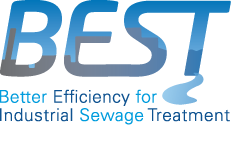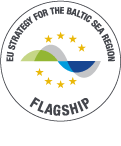6) Testing methods for tertiary wastewater treatment
Tallinn University of Technology piloting in Project BEST
Final report of the pilot study
Guidelines for selection of tertiary wastewater treatment technology, LINK TO THE REPORT
Summary
Watch a video on the piloting equipment:
The aim of the work was to test methods for tertiary wastewater treatment enabling efficient removal of harmful substances and excess phosphorus from the treated wastewater. Efficient tertiary treatment prevents contaminating sewage sludge enabling its reuse, and ensures that the wastewater treatment plant meets the phosphorus limits set for the cleaned sewage.
The work was carried out with a pilot scale equipment to test different filter technologies (e.g. granular filter and disk filter), to find out efficient removal methods for harmful substances. The pilot scale equipment was tested in different WWTPs in Estonia, Latvia and Poland.
Data on the wastewater contents and quality changes was collected by sampling the inlet and outlet of the wastewater and content of sludge in WWTPs receiving different industrial effluents in Poland, Estonia and Latvia.
The purpose of the study was to analyse the various post-treatment technologies for the removal of phosphorus and heavy metals in the wastewater treatment plant. A total of 14 different technological solutions were studied, including both chemical and physical treatment technologies. The impact of the studied technological solutions on the removal of organic loading (COD, BOD) and nitrogen removal was further assessed. The study also analysed investment and operating costs related to the various post-treatment technologies.
The main conclusions of the study were:
- There is no universal treatment technology that would remove all phosphorus and the heavy metals. Therefore, laboratory tests should be carried out prior to planning of each new equipment to assess the efficiency of the proposed equipment in removing the pollutant of concern.
- The pH manipulation, which reduces solubility of heavy metals and allows them to be filtered out, proved to be the most efficient of the solutions studied.
- In case only phosphorus removal is required, the tests showed that phosphorus was most efficiently removed when coagulation and flotation processes were applied prior to filtration.
- In comparison of the granular filter and the disc filter, the filter filled with medium is more flexible because different filter media like sand, activated carbon, etc. can be used, whereas the disc filter is easier to operate. However, in terms of the size of investment, it should be borne in mind that the granular filter needs more space, and the equipment is also more expensive.



